
|
You entered: terrain
22.03.2002
Scroll right and journey for 300 kilometers over Terra Sirenum in the cratered highlands of southern Mars. The infrared view, 32 kilometers wide, was recently recorded by the THEMIS camera on board the orbiting Mars Odyssey spacecraft.
 Pathfinder on Mars
Pathfinder on Mars
5.07.1997
Yesterday, July 4th, using its own array of fireworks, a parachute, and a cocoon of airbags, the Mars Pathfinder spacecraft successfully bounced and came to rest on the surface of Mars at 10:07 AM Pacific Daylight Time.
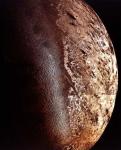 Triton: Neptune's Largest Moon
Triton: Neptune's Largest Moon
10.10.1999
One hundred and fifty three years ago, on October 10th, 1846, William Lassell was observing the newly discovered planet Neptune. He was attempting to confirm his observation, made just the previous week, that Neptune had a ring. But this time he discovered that Neptune had a satellite as well.
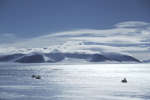 Searching for Meteorites in Antarctica
Searching for Meteorites in Antarctica
7.09.2008
Where is the best place on Earth to find meteorites? Although meteors fall all over the world, they usually just sink to the bottom of an ocean, are buried by shifting terrain, or are easily confused with terrestrial rocks.
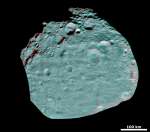 Stereo Vesta
Stereo Vesta
20.08.2011
Get out your red/blue glasses and float next to 4 Vesta. A 500 kilometer diameter world, Vesta lies in the main asteroid belt between the orbits of Mars and Jupiter. This stereo anaglyph...
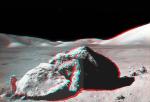 Apollo 17: Boulder in Stereo
Apollo 17: Boulder in Stereo
11.01.2003
Humans left the Moon over thirty years ago, but donning red-blue glasses (red for the left eye) you can share this excellent stereo perspective view of their last stomping ground. Recorded by Eugene Cernan...
 The Cliffs of Comet Churyumov Gerasimenko
The Cliffs of Comet Churyumov Gerasimenko
22.12.2014
These high cliffs occur on the surface of a comet. They were discovered to be part of the dark nucleus of Comet ChuryumovGerasimenko (CG) by Rosetta, a robotic spacecraft launched by ESA which began orbiting the comet in early August. The ragged cliffs, as featured here, were imaged by Rosetta about two weeks ago.
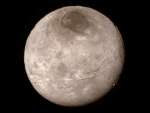 Charon
Charon
17.07.2015
Icy world Charon is 1,200 kilometers across. That makes Pluto's largest moon only about 1/10th the size of planet Earth but a whopping 1/2 the diameter of Pluto itself. Charon is seen in unprecedented detail in this image from New Horizons.
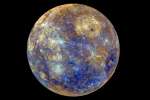 Colors of Mercury
Colors of Mercury
1.03.2013
The colors of the solar system's innermost planet are enhanced in this tantalizing view, based on global image data from the Mercury-orbiting MESSENGER spacecraft. Human eyes would not discern the clear color differences but they are real none the less, indicating distinct chemical, mineralogical, and physical regions across the cratered surface.
 Fly Over Pluto
Fly Over Pluto
18.07.2015
It took 9.5 years to get this close, but you can now take a virtual flight over Pluto in this animation of image data from the New Horizons spacecraft. The Plutonian terrain unfolding 48,000 miles (77,000 kilometers) below is identified as Norgay Montes, followed by Sputnik Planum.
|
January February March April May June July |
|||||||||||||||||||||||||||||||||||||||||||||||||